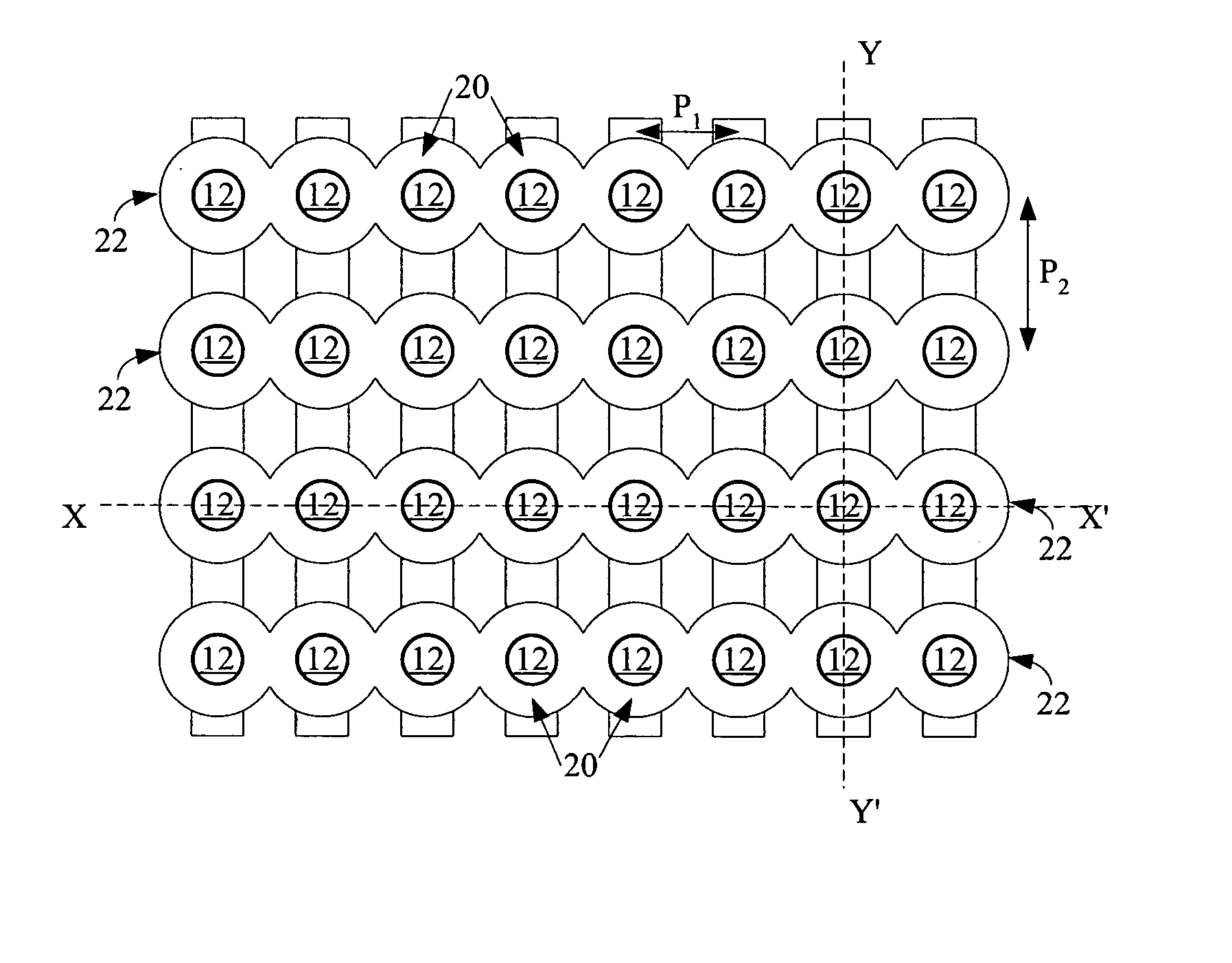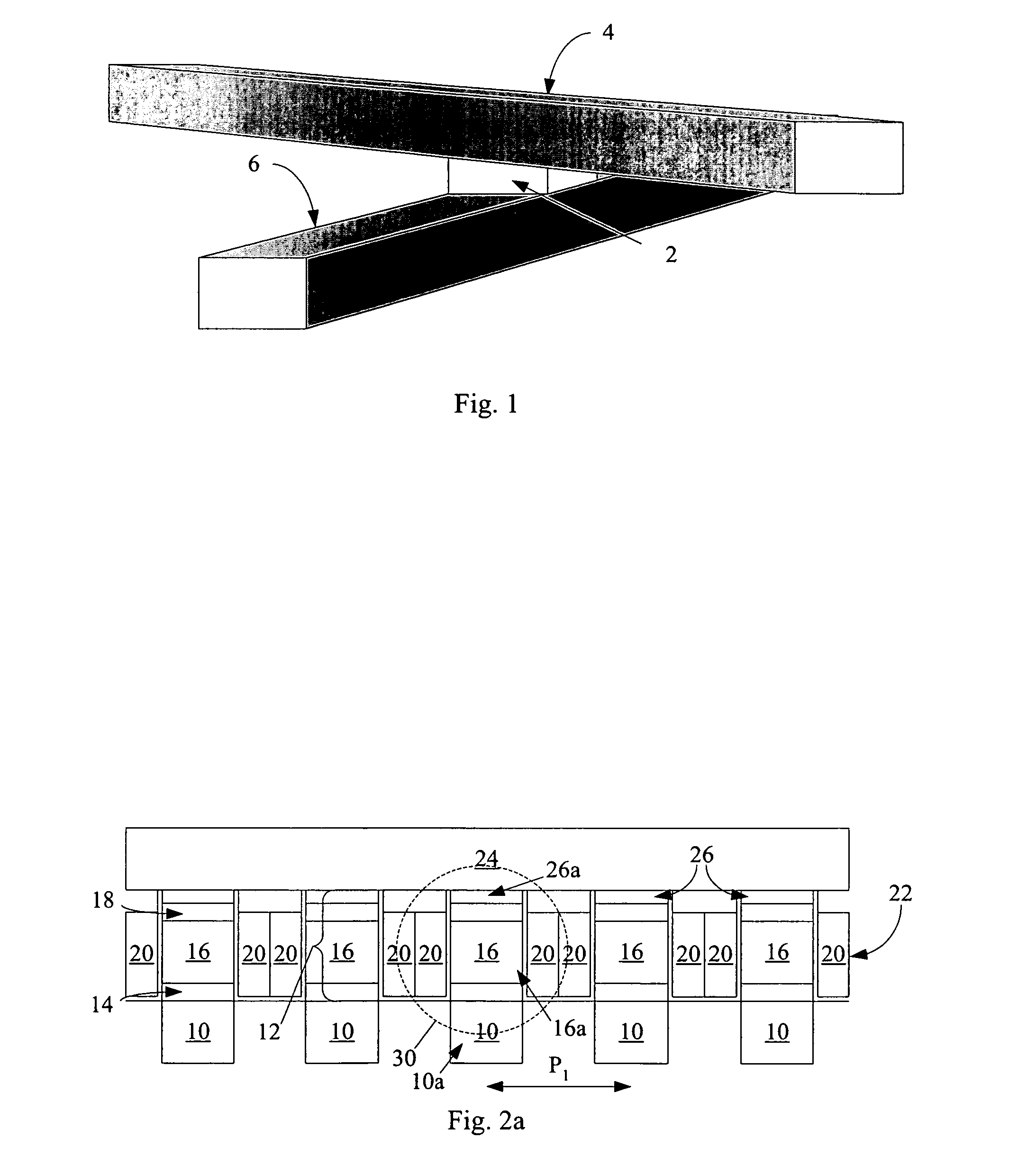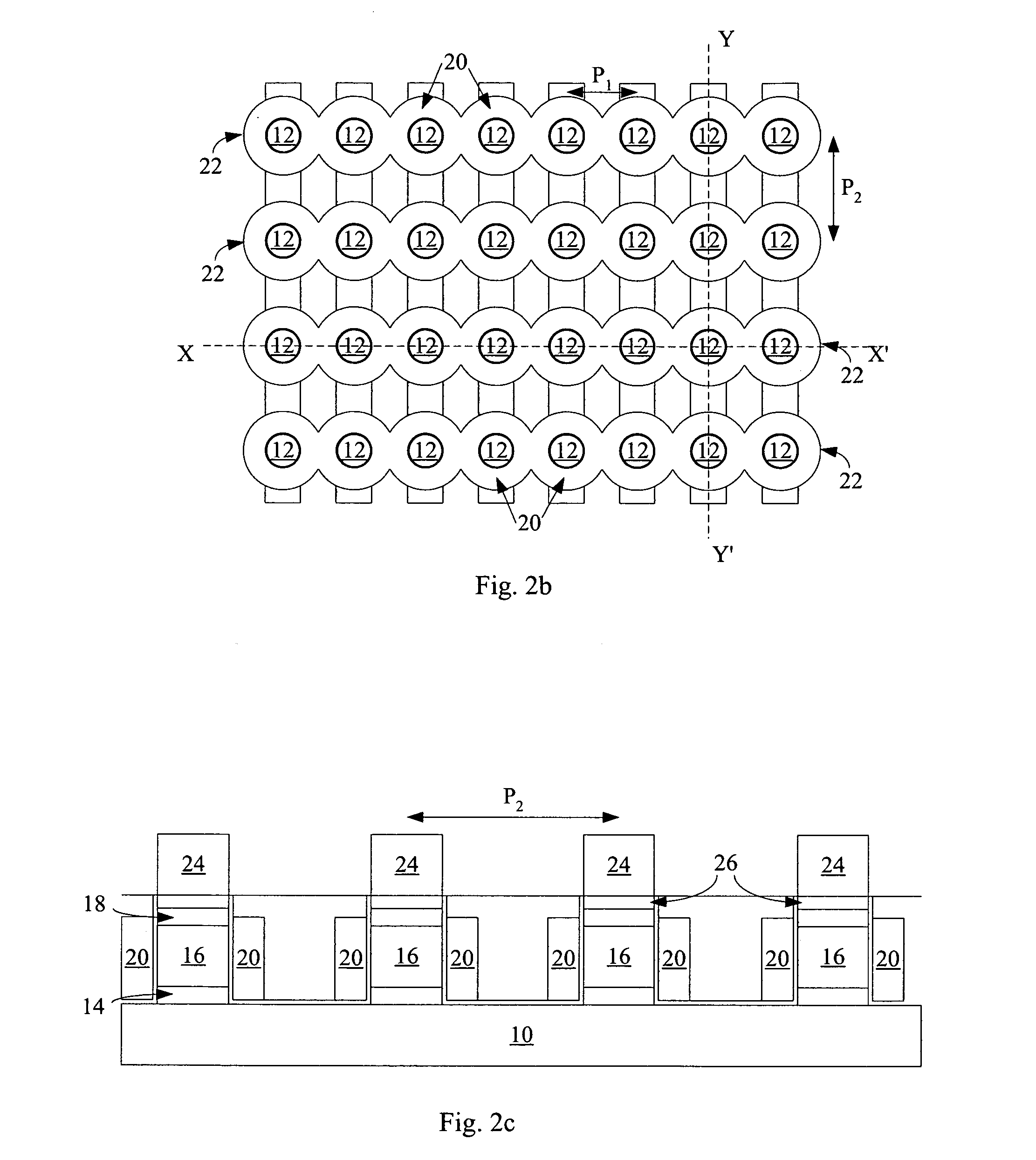Rewriteable memory cell comprising a transistor and resistance-switching material in series
a memory cell and transistor technology, applied in the direction of bulk negative resistance effect devices, semiconductor devices, electrical devices, etc., can solve the problems of difficult to form a large, high-density array of such cells, provide precisely controlled read, and s
- Summary
- Abstract
- Description
- Claims
- Application Information
AI Technical Summary
Benefits of technology
Problems solved by technology
Method used
Image
Examples
first embodiment
[0016]FIGS. 4a-4j are views showing stages in formation of the present invention. FIGS. 4c and 4j are plan views; the rest are cross-sectional views.
[0017]FIG. 5 is a cross-sectional view showing two memory levels according to the embodiment of FIGS. 4a-4j sharing reference lines.
[0018]FIG. 6a is a cross-sectional view showing four memory levels according to the embodiment of FIGS. 4a-4j sharing reference lines and data lines. FIG. 6b is a cross-sectional view showing four memory levels according to the embodiment of FIGS. 4a-4j sharing reference lines, but not sharing data lines.
[0019]FIGS. 7a-7c are circuit diagrams describing voltages applied to set, reset, and read a selected memory cell S in an array formed according to the first embodiment of the present invention.
second embodiment
[0020]FIGS. 8a-8g are cross-sectional views showing stages in formation of the present invention.
[0021]FIGS. 9a-9c are circuit diagrams describing voltages applied to set, reset, and read a selected memory cell S in an array formed according to the second embodiment of the present invention.
PUM
 Login to View More
Login to View More Abstract
Description
Claims
Application Information
 Login to View More
Login to View More - R&D
- Intellectual Property
- Life Sciences
- Materials
- Tech Scout
- Unparalleled Data Quality
- Higher Quality Content
- 60% Fewer Hallucinations
Browse by: Latest US Patents, China's latest patents, Technical Efficacy Thesaurus, Application Domain, Technology Topic, Popular Technical Reports.
© 2025 PatSnap. All rights reserved.Legal|Privacy policy|Modern Slavery Act Transparency Statement|Sitemap|About US| Contact US: help@patsnap.com



